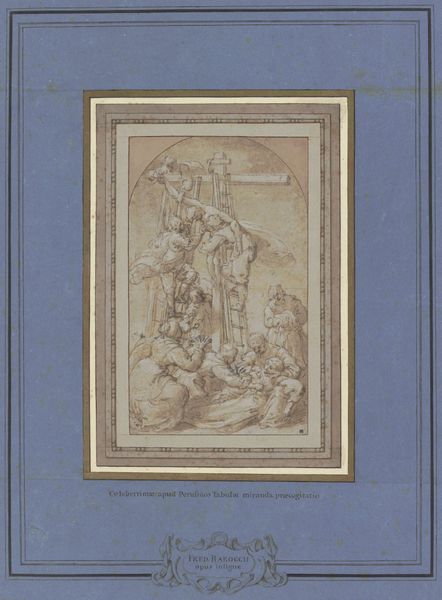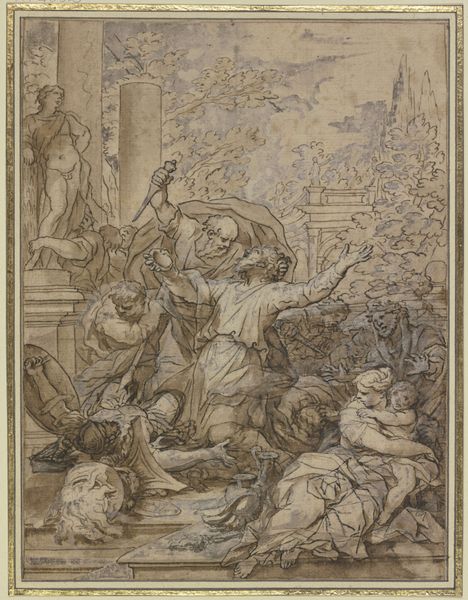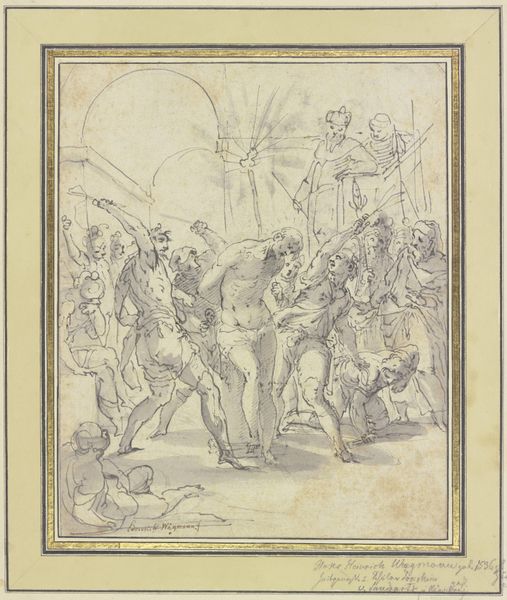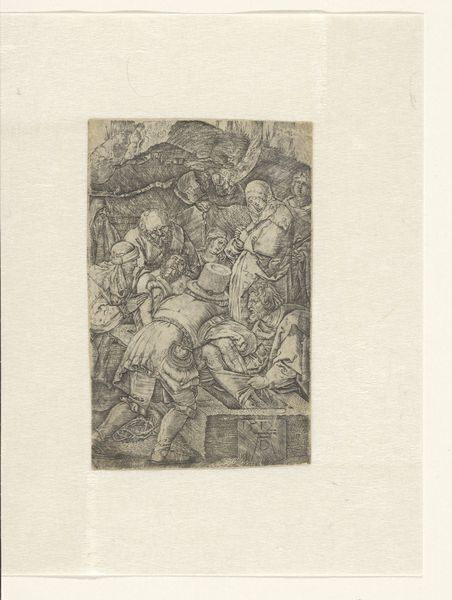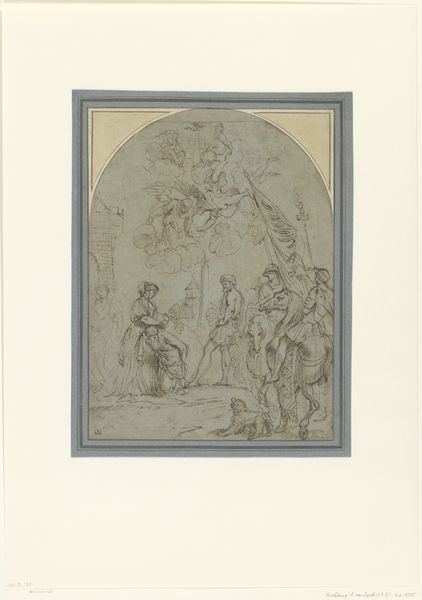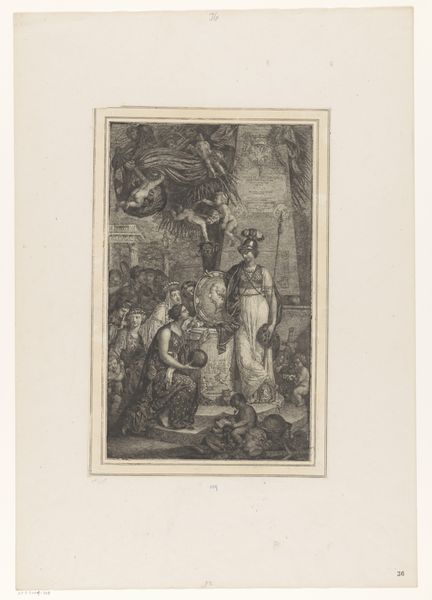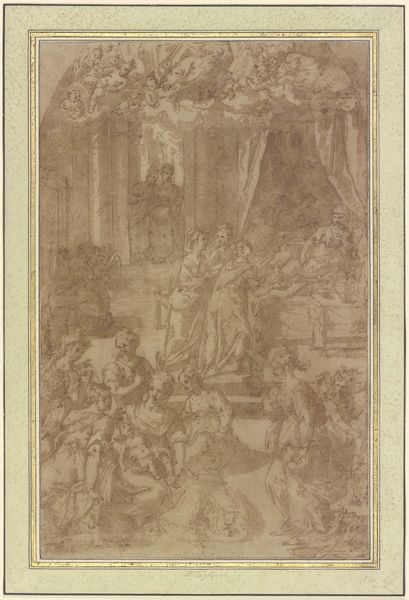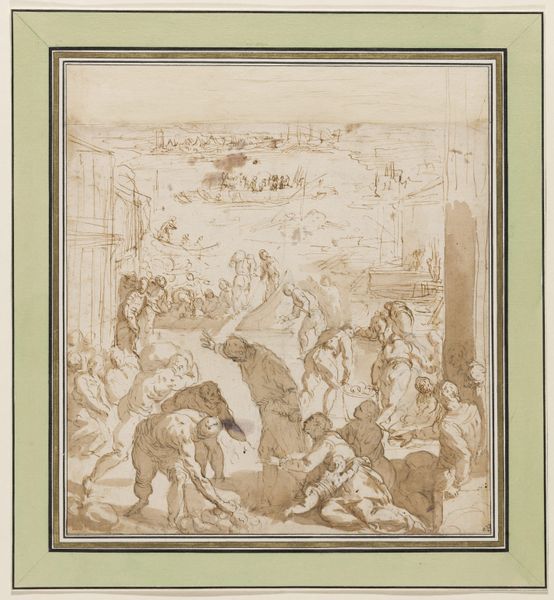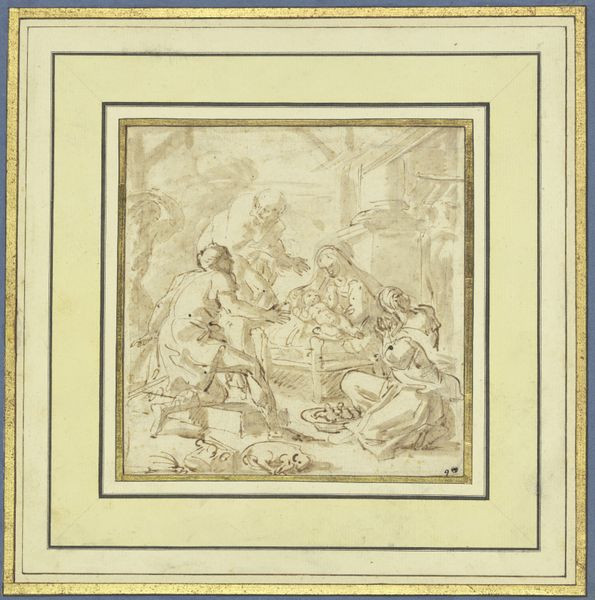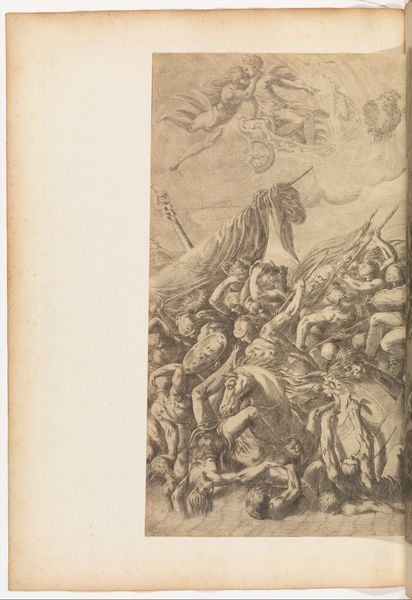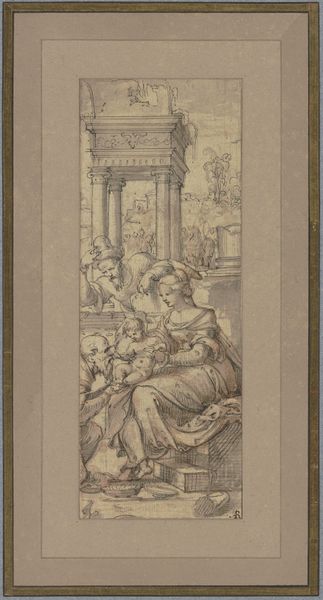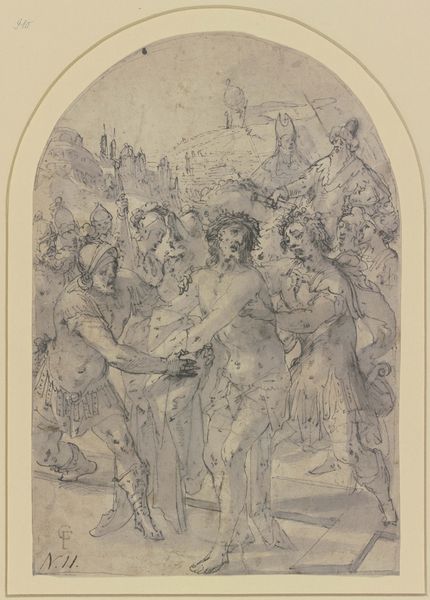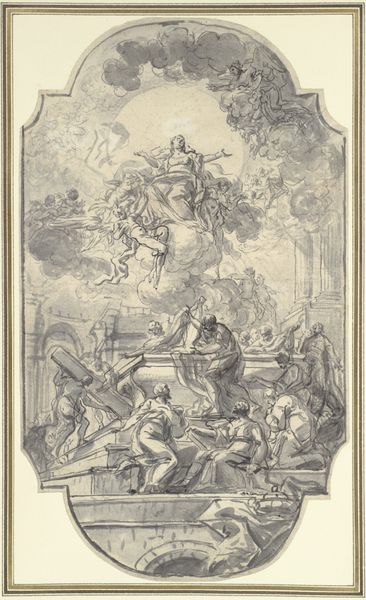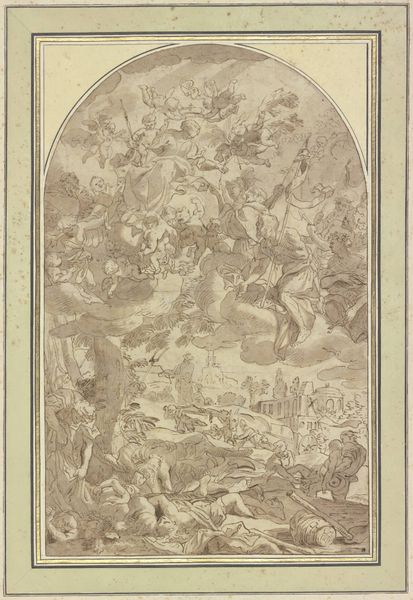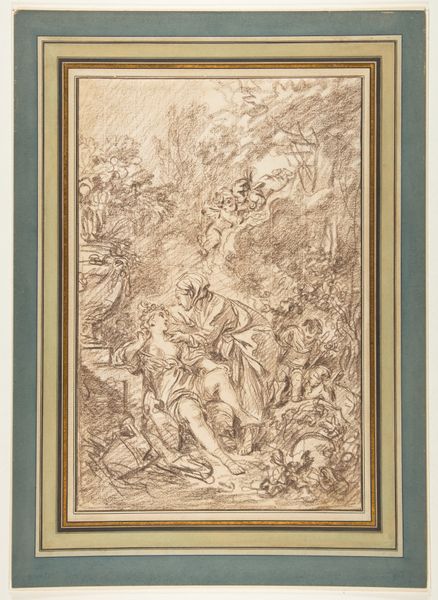
Die Muttergottes mit dem Kind unter einem von Engeln gehaltenen Baldachin, umgeben von vielen Heiligen und Engeln
0:00
0:00
drawing, paper, ink
#
drawing
#
baroque
#
figuration
#
paper
#
ink
#
history-painting
Copyright: Public Domain
Editor: Here we have "The Virgin Mary with the Child Under a Canopy Held by Angels, Surrounded by Numerous Saints and Angels," a drawing by Carlo Maratti rendered in ink on paper. The figures create such a flurry, it almost feels like the scene is erupting from the page. What catches your eye in this piece? Curator: The central figures of the Virgin and Child certainly command attention, but I'm immediately drawn to the sociopolitical context it implies. How does this idealized vision of divine motherhood interact with the lived realities of women, especially during the Baroque period? What role does the Church play in reinforcing patriarchal power structures through such images? Editor: I hadn’t thought about it that way. I was just seeing it as, well, religious. Curator: And that's valid, but religion isn't detached from power. Consider the patronage system: the Church was a major commissioner of art, and its doctrines heavily influenced artistic themes. This image, therefore, functions on multiple levels: devotional, aesthetic, and ideological. What kind of narratives do depictions of Mary perpetuate? How do those intersect with the identities of women who may or may not see themselves represented? Editor: It makes you think about the limitations of representation, doesn't it? Curator: Precisely! By exploring how images reinforce, or challenge, societal norms and expectations, we can engage with the artwork on a much more critical level. For instance, note how the angels and saints surrounding the central figures are almost exclusively male. What implications does that visual hierarchy suggest about gender roles and power? Editor: I see what you mean. I came in thinking it was simply a historical drawing, but it has so much more to say about the society it came from. Curator: Absolutely! Analyzing art through a lens of gender, race, class, and power helps us decode its hidden messages and understand its complex relationship to the world. Editor: I’ll never look at Baroque art the same way again! Thanks!
Comments
No comments
Be the first to comment and join the conversation on the ultimate creative platform.
